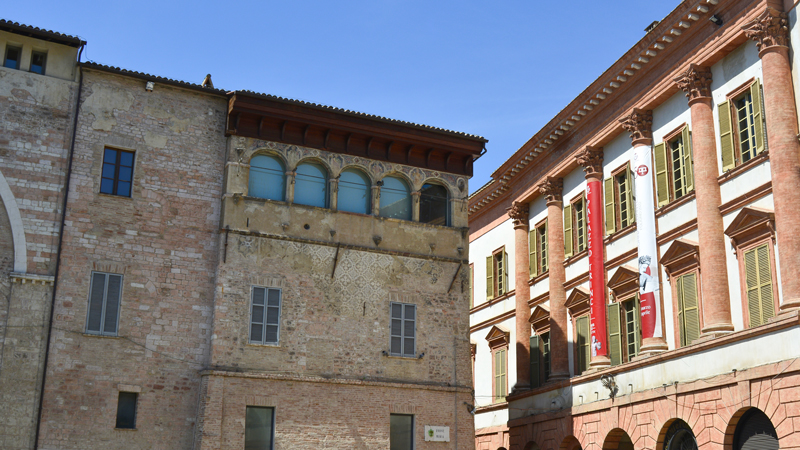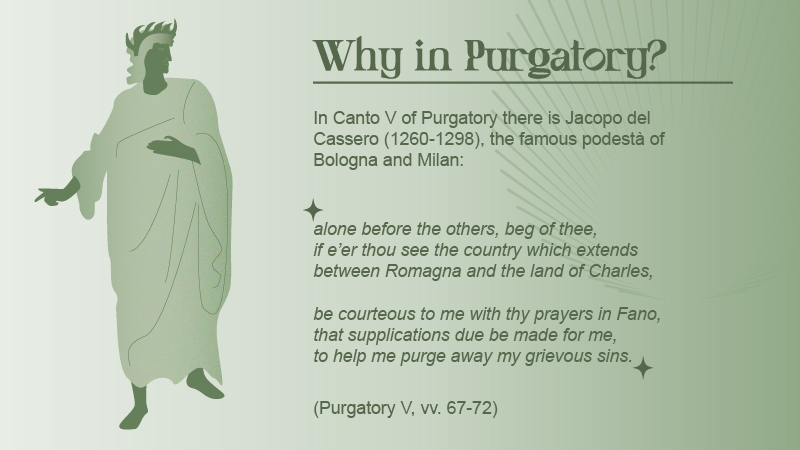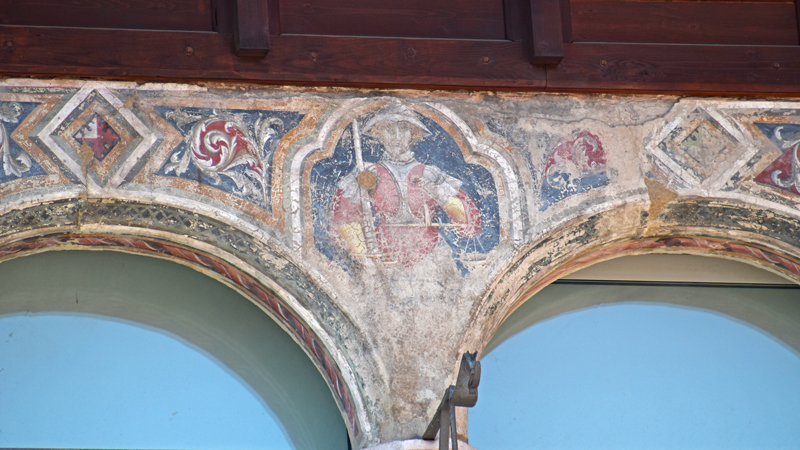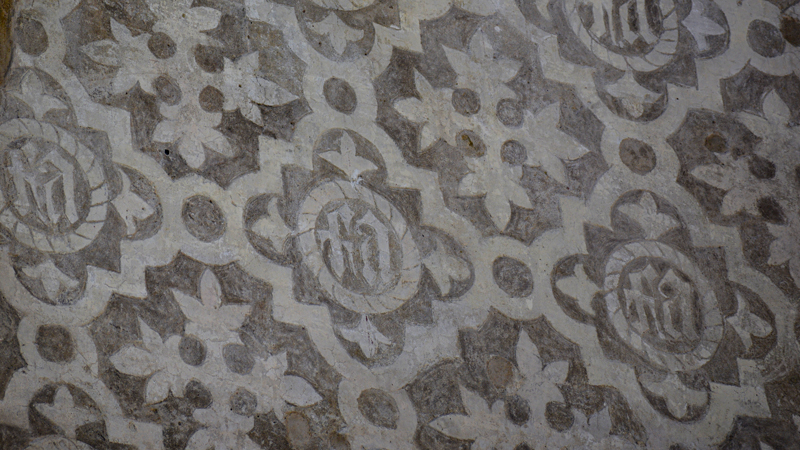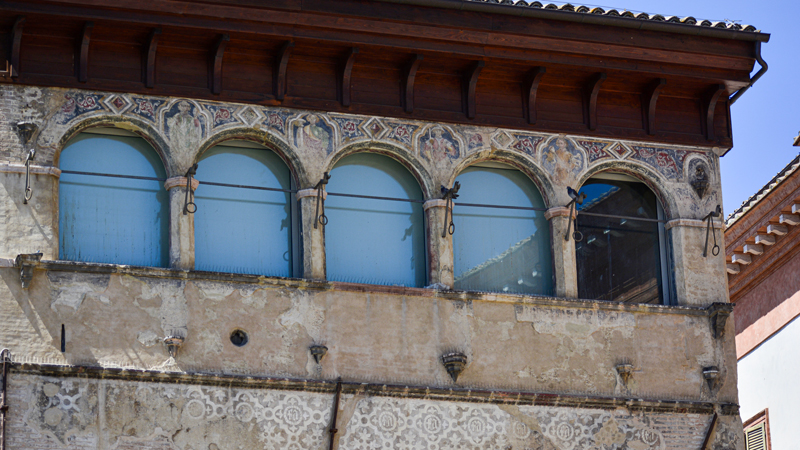Characterized by the elegant loggia built in the thirteenth century, this Palazzetto or “little palace”, was renovated by the Trinci family, as testified by the tapestry painted on the external wall bearing their number. The building was once connected to Palazzo Trinci by a bridge, demolished in 1758 by the Orfini family who had become the owners of the palace in 1599. The decoration of the facade is attributed to Giovanni Corraduccio known as Mazzaforte and it represents the cardinal virtues, a reminder of what should guide political power. The internal decoration of the loggia is monochrome, reflecting the taste of the time in Foligno; on the long wall are represented the theological virtues seated above the walls of a city, while on the other walls there is a complex composition, perhaps an allusion to the mythical foundation of the city by Tros, progenitor of the Trinci family who fled from Troy in flames. The female figure would be Flamminea, symbol of the city.

Il progetto Divina Foligno è sviluppato nell’ambito del “programma Agenda urbana di Foligno Smart community - Comunità, Sostenibilità – Foligno 2020” intervento OT.6 INT_01 “Realizzazione della rete di attrattori culturali attraverso la realizzazione di itinerari culturali e tematici

The Divina Foligno project is promoted and financed as part of the "Urban Agenda of Foligno Smart community - Community, Sustainability - Foligno 2020 program" intervention OT.6 INT_01 "Creation of a network of cultural attractions through the creation of cultural and thematic itineraries"

Copyright © 2022 Landmark. All rights reserved.

